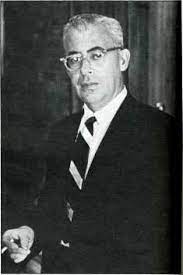Shaw, Clifford

Bio: (1896-1957) American sociologist. Clifford Shaw received his doctorate from the University of Chicago, after which he worked for several years as a juvenile probation officer at the juvenile court. He taught at the University of Chicago and was also the director of the Institute for Juvenile Research. Shaw has published several books dealing with juvenile delinquency and delinquency. In the book The Jack Roller: A Delinquent Boy's Own Story (1930), Shaw presents a case study of a delinquent boy. In this study, he combined the biographical method (he interviewed the juvenile delinquent in detail about his life) and the collection of official and statistical data. Shaw focused on several areas of a boy's life: the boy's attitudes, the socio-cultural world in which he lived, and the time sequence of situations and experiences. He first collected and chronologically arranged the data of official institutions, then asked the boy to write his own story, after that, in conversations with him, Shaw asked the boy to clarify the discrepancies between his story and official data and thus encouraged the boy to think about his delinquency. In addition, he collected data on a school, family, environment, and delinquency rates.
In the book Juvenile Delinquency and Urban Areas (1931), co-written by Shaw and Henry McKay, the authors explore the distribution of delinquency in different parts of Chicago in the early twentieth century. They found that delinquency is increasing in neighborhoods away from the city center and that some neighborhoods have had high rates of delinquency for decades, even though ethnic composition has changed significantly in the same neighborhoods. Neighborhoods with high delinquency rates had high rates of adult crime, tuberculosis, and infant mortality. Shaw and McKay created an environmental model to explain juvenile delinquency. They observed the increase in delinquency in the context of the cities' increase because with that increase comes the formation of neighborhoods with specific physical, social, economic, and cultural characteristics.
The neighborhoods, where the population is declining, where poverty is widespread, and where a large proportion are immigrants and African-Americans, are most affected by delinquency. As a result of these factors, togetherness, and common goals are declining, leading to a reduction in the influence of institutions and social control. All these circumstances have led to the existence of opposing value systems. The decline in the community's ability to informally control crime has led to the formation of a criminal subculture. Delinquent subcultures, peer pressure, and the need to belong to a group were critical factors in the development of delinquent behavior. For young people, belonging to delinquent groups meant the possibility of achieving goals that they could not achieve otherwise. As a solution to these problems, the authors proposed the implementation of programs that would unite and strengthen the community and social life in it.
Theoretical approaches
Chicago SchoolMain works
Delinquency Areas (1929);
The Jack Roller: A Delinquent Boy's Own Story (1930);
Juvenile Delinquency and Urban Areas (1931);
Brothers in Crime (1938);
The Natural History of a Delinquent Career (1942).

